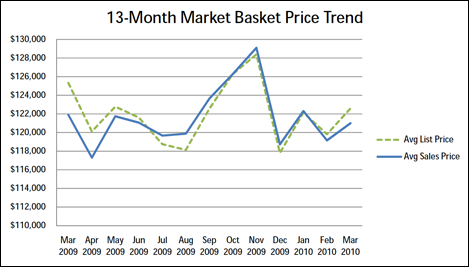Phoenix handyman Mark Deermer and I took a look at five relatively inexpensive homes in Surprise, a northwest suburb of Phoenix, that could work well as rentals properties.
Our findings — with photos, links to MLS listings and projected financials — are linked here: Rental home investment possibilities in Surprise, Arizona.
Here is one of the properties we saw, as an example of the kinds of things we’re taking into account:
17410 West Lisbon Lane, Surprise, AZ 85388
List price: $79,900. 3 bedrooms, 2.5 baths. 1,578 square feet. Courtesy of: RE/MAX Professionals. Google map. Schools: Elementary, Junior High, High School. Property tax record. MLS listing. Nearby homes for sale.
Estimated repair costs: $7515.
Estimated rent: $850.
Initial offer: $75,000.
I don’t hate offering less than that, but getting an offer accepted on a lender-owned home is always a game of double-think. The longer a property has languished — which usually means the worse its condition — the more flexible the bank will be on price.
Handyman Mark Deermer is touring these houses with me. His repair estimates take into account everything we see — stipulating that unseen problems may turn up when we do the home and wood inspections. But his estimate is the cost to turn any candidate home into a turn-key rental — a home you will be proud to own and your tenants will be proud to maintain.
When I project rents, I’m working from recent closed leases in the MLS for that size and style of home in that subdivision. I deliberately understate the numbers, because I want any variation to come as a happy surprise.
Also, I am hand-selecting the properties we look at. I eliminate a lot of towns and subdivisions because the tenant pool is not as deep as I want. I rarely even consider a home with a poor western exposure, since this will increase the air conditioning costs for the tenant — which will induce the tenant to rent someone else’s house instead. I tend to favor easy access to schools and shopping. And even when we visit a house that meets all these criteria, I may eliminate it if I don’t like the floorplan — or just the feel of the home.
This is the lay of the land: Phoenix has always been a soft rental market, but the homes I pick tend to rent quickly to premium tenants, they tend to stay rented, they tend to suffer little vacancy between tenants, and they should sell quickly and at a premium price to owner-occupants on the way out.
We’re doing everything we can to maximize the profit potential of the homes we sell. If you click through to this weblog post and follow its links, you can find out a lot more about Bloodhound Realty’s rental property investment philosophy. But the bottom line is the bottom line: You’re investing in rental homes to make money. We’re cherry-picking (and cherry-polishing!) just the right houses to make sure you do.
There are 30,000 Realtors in Metropolitan Phoenix. Why should you work with us when you’re ready to invest your heard-earned dollars? Because we’ve thought this problem through, and we’ve arrived at what we think is an optimal solution to maximize your profits and minimize your headaches. Prices are low, interest rates are low, and, if you get just the right house and serve it up just right to the marketplace, there is money to be made in suburban Phoenix. Drop me an email or phone me at 602-740-7531 and let’s talk about making some of that money for you and your family.



